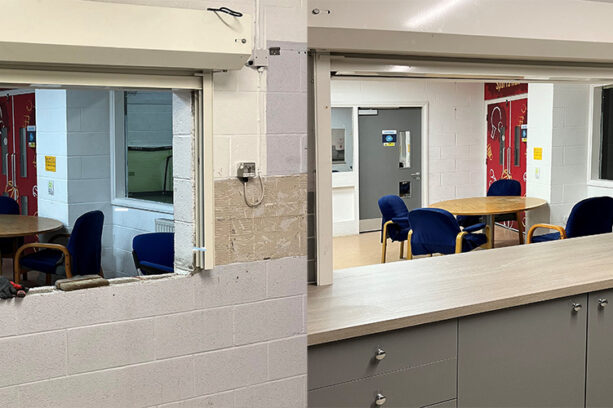A bit MIFID

Some may find it helpful, some may find it frustrating and a lot of people are finding it confusing – but how is MIFID II effecting the cost of investing? Mike Deverell goes through the figures to breakdown the actual impact of this regulation.
Definitions
LIBOR: The basic rate of interest used in lending between banks on the London interbank market and also used as a reference for setting the interest rate on other loans.
Opportunity cost: The benefit that is missed or given up when an investor, individual or business chooses one alternative over another.
Offer price: The price at which a trader or dealer is prepared to sell a security or asset.
Bid price: The price at which a trader or dealer is prepared to buy a security or asset.
Spread: The difference between two prices.
In the retail business, “slippage” is when the retailer realises they have less stock than they thought. It’s essentially a euphemism for the amount of stuff that has been nicked.
We’ve recently had to get used to using the same term in finance, after the introduction of the MIFID II regulations at the beginning of 2018.
I’ll come back to slippage later, however these regulations are all about providing transparency to investors about how much they’re paying for their investments.
This is a laudable aim and we’re all for transparency. I’ve lost count of the number of times we’ve come across a prospective client who is paying way more for their investments than they think!
However, the aim should be to improve understanding and to allow investors to make informed decisions (as well as making sure they’re not ripped off). Unfortunately, we think some of the information fund managers are forced to provide actually leaves investors with less understanding than before! We’re being increasingly asked about this by our clients so I thought I’d take some time and break down how costs work under MIFID II regulations.
A potential new investment
I mention this as we’ve recently been considering investing in a new fund. The fund – which I’m not naming out of courtesy to the manager – is an alternative equity strategy which can go both long (holding stocks that you think will go up) and short (profiting from stocks or markets going down).
Past Performance is not a guide to future returns, however, the fund has returned 98.5% since 29 September 2017. Over the same period the MSCI AC World returned 67.8% and the FTSE Allshare returned 31.5%.
We’ve had our eye on this fund for a while, however it has been closed to new investors after reaching capacity. There is now some availability and so we’re considering whether to invest.
However, looking at the costs published under the MIFID II regulations has made us question whether to proceed.
How much?!
Under the old regulations you would see two costs on a fund:
- AMC (annual management charge) – how much the manager is paid for running the fund.
- OCF (ongoing charges figures) – generally just the above plus the administrative costs of running the fund.
Now, in addition to the above you also have:
- Ongoing charges – this is different from the OCF despite the similar name!
- Incidental costs – those costs can vary from year to year.
- Transaction costs – how much it costs to buy and sell the holdings within the fund.
The fund we were considering has an AMC of 1% and an OCF of 1.18%. This is a bit on the expensive side but given the potential returns we think this is still decent value.
However, the additional costs disclosed under MIFID II are:
- Ongoing charges: 2.02%
- Incidental costs: 3.21%
- Transaction costs: 5.05%
This adds up to a total of more than 10%!
There’s no way we’d ever pay 10% per annum for a fund, however we think this figure is pretty misleading. Things can get a little complex here, but you’ll see how this is case below when I break down these costs.
Ongoing charges 2.02%
This is the OCF of 1.18% plus stock loan interest of 0.84%.
Let me explain loan stock interest. When a fund shorts a share it essentially borrows the stock, and therefore has to pay interest on the loan. The fund then sells the stock and hopes that it falls in value.
For example:
- Fund A borrows 100,000 shares of XYZ Inc (worth £1 per share) from a pension fund
- The fund pays the pension fund 0.84% interest on the loan = £840
- The manager sells the stock at £1 per share = £100,000
- The stock falls in value to £0.80 per share
- Fund A buys back the stock for £80,000 and “repays” the loan – returning the shares to the pension fund
- The profit is £20,000 – £840 loan interest = £19,160.
These days it is all done synthetically and no physical stock is actually sold, but the same principal applies.
Incidental costs – 3.21%
The fund charges a performance fee of 20% of any returns above three month London Inter-Bank Offered Rate (LIBOR).
Over three years, the fund has provided some great returns and so this has averaged 3.21% pa over that period. The fund manager has been very well paid, but so has the investor.
The fee is subject to a “high watermark”. What this means is, the performance fee can only be paid when the fund is above its previous peak. For example, if it fell 10% and then gained back that 10%, you wouldn’t pay a performance fee.
We know that all investments carry risks and will fall as well as rise. In particular, this fund is a very risky one and as of 29 March is 15.3% below its previous peak. We would be extremely happy to pay a performance fee as this would mean the fund would have gone up over 18%!
Transaction costs – 5.05%
This is the big one, and this is where that term “slippage” comes in.
Of this figure, on the fund 0.52% is explicit trading costs i.e. broker fees, stamp duty etc.
A further 4.53% can be attributed to “slippage” – the difference between the “arrival price” and the “execution price”. This is not an actual cash cost – nobody is writing a cheque for this amount – but more of an opportunity cost for investing.
The fund we’re talking about will invest across all sizes of companies and has a very high turnover of stock. It’s vital that a long/short fund actively trades. If you short a stock the opposite is true, so you need to trade frequently to capture gains and cap losses.
Small cap stocks have a higher cost of trading and the more you trade the bigger those costs will be.
Below is an example of slippage costs at the small cap end of the spectrum. This can get a bit techy so please feel free to skip to the final part of the blog!
Slippage
An AIM stock is quoted in the market at an offer price of £1 per share and a bid price of £0.98 per share.
That means that you could sell stock at £0.98 but it would cost you £1 per share to purchase = a spread of 2%.
Let’s say you want to buy £100,000 of stock.
The headline offer price may only be for £10,000 of stock, i.e. that seller only has 10,000 shares available.
Another market participant may have £40,000 worth of stock but they will only sell it to you for £1.01 per share (39,603 shares).
A third participant will sell you £50,000 of stock for £1.03 per share (48,543).
Your £100,000 investment only buys 98,146 shares at an average price of £1.018 (arrival price).
To do your slippage calculation you compare the arrival price with the execution price, the headline price when you placed the trade of £1 per share. Your slippage is 1.8%.
Even worse, because of the 2% spread if you tried to sell the shares again immediately then you would receive only £96,177 (assuming the “bid” of £0.98 was available for the whole lot!).
Trading in the stockmarket costs money and the more you trade the more of an impact this has. However, if you tried to do this yourself you would probably end up paying the same or even more.
Clear as mud
I hope I’ve been able to explain some of this but clearly it is pretty complicated!
By providing these figures without the underlying explanations are you more or less likely to make an informed decision?
Cost is one of the big factors we take into account in our fund selection. In many cases we have been able to negotiate discounts or access to cheaper share classes than most investors are able to access. When deciding between two similar funds, costs is one of the main swing factors.
However, as always it is not just about cost but about value. Even though past performance isn’t a guide to future performance, the fund we are considering has demonstrated little correlation to stockmarkets, exactly the sort of thing we like in a diverse portfolio.
Despite the high headline costs, we still think it represents reasonable value and so have decided to continue with our plans to invest.
If you still have questions about charging, and specifically how this works in investments, we’re happy to take your questions. Please get in touch with your Adviser or Client Manager who can help with forwarding these queries to the investment team.
Disclaimer: The content contained in this blog represents the opinions of Equilibrium Investment Management. The commentary in this blog in no way constitutes a solicitation of investment advice. It should not be relied upon in making investment decisions and is intended solely for the entertainment of the reader. You should be aware that the value of an investment can go down as well as up, and no guarantees can be made as to the future performance.

